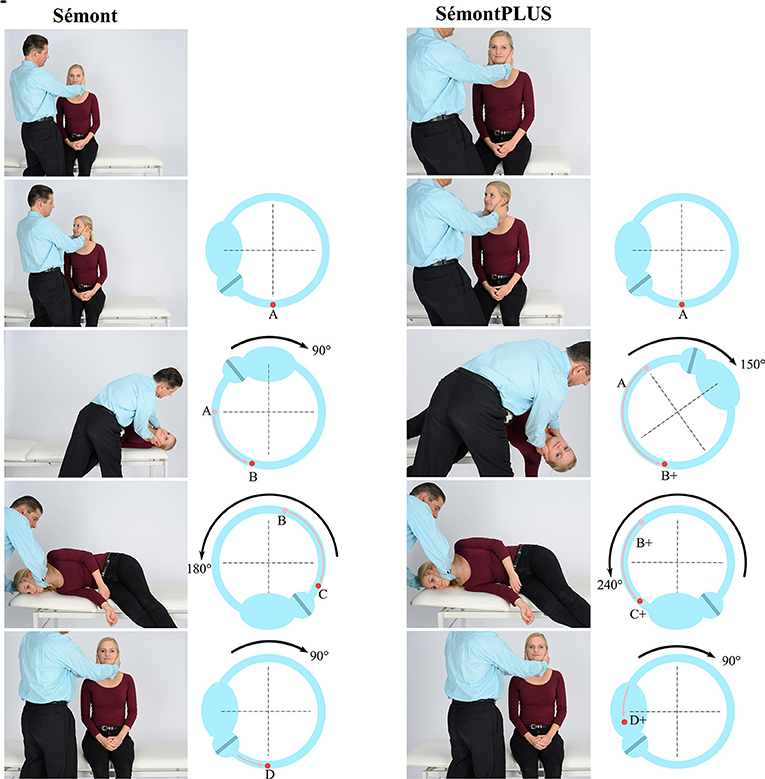Importance: Questions remain concerning treatment efficacy for the common condition of benign paroxysmal positional vertigo (BPPV).
Objective: To compare the effectiveness of the Semont-plus maneuver (SM-plus) and the Epley maneuver (EM) for treatment of posterior canal benign paroxysmal positional vertigo (pcBPPV) canalolithiasis.
Design, setting, and participants: This prospective randomized clinical trial was performed at 3 national referral centers (in Munich, Germany; Siena, Italy; and Bruges, Belgium) over 2 years, with a follow-up to 4 weeks after the initial examination. Recruitment took place from June 1, 2020, until March 10, 2022. Patients were selected randomly during routine outpatient care after being referred to 1 of the 3 centers. Two hundred fifty-three patients were assessed for eligibility. After consideration of the exclusion criteria as well as informed consent, 56 patients were excluded and 2 declined to participate, with 195 participants included in the final analysis. The analysis was prespecified and per-protocol.
Interventions: After being randomized to the SM-plus or the EM group, patients received 1 initial maneuver from a physician, then subsequently performed self-maneuvers at home 3 times in the morning, 3 times at noon, and 3 times in the evening.
Main outcome and measures: Patients had to document whether they could provoke positional vertigo every morning. The primary end point was the number of days until no positional vertigo could be induced on 3 consecutive mornings. The secondary end point was the effect of the single maneuver performed by the physician.
Results: Of the 195 participants included in the analysis, the mean (SD) age was 62.6 (13.9) years, and 125 (64.1%) were women. The mean (SD) time until no positional vertigo attacks could be induced in the SM-plus group was 2.0 (1.6) days (median, 1 [range, 1-8] day; 95% CI, 1.64-2.28 days); in the EM group, 3.3 (3.6) days (median, 2 [range, 1-20] days; 95% CI, 2.62-4.06 days) (P = .01; α = .05, 2-tailed Mann-Whitney test). For the secondary end point (effect of a single maneuver), no significant difference was detected (67 of 98 [68.4%] vs 61 of 97 [62.9%]; P = .42; α = .05). No serious adverse event was detected with both maneuvers. Nineteen patients (19.6%) in the EM group and 24 (24.5%) in the SM-plus group experienced relevant nausea.
Conclusions and relevance: The SM-plus self-maneuver is superior to the EM self-maneuver in terms of the number of days until recovery in pcBPPV.

Fazit:
Das Semont-Manöver-Plus ist zwar etwas erfolgreicher, führt aber nach unserer Erfahrung nach öfter zu Übelkeit. Wir führen die Diagnostik durch und geben dann Übungen mit. Je rascher und intensiver die Übungen gemacht werden, umso eher kann der BPLS zum Abklingen gebracht werden.
Vorgehen: Diagnostik nach typischer Anamnese. Provokationstest, erste Therapie und dann Eigenübungen.